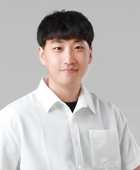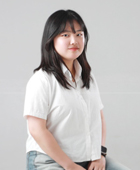
열 재유동 공정을 통해 제작된 마이크로렌즈 배열의 곡률 및 높이 변화에 대한 가해지는 열 에너지의 영향에 관한 연구
 ; Seok Kima, *
; Seok Kima, *
Abstract
Micro Lens Arrays (MLAs) are modeled after insect eyes and comprise a (50–150) micrometer-sized array of lenses with multiple applications. We used photoresists (PR) in MLA construction to improve cost-efficiency over conventional methods. Reflow processes at temperatures beyond the glass- transition (glassy to rubbery state temperature) are used to mold lens shapes, making reflow ideal for shape reassembly. PR reflow in MLA production is rapidly adaptable, cost-effective and ensures uniform lens shapes in large-scale production. Experimental results show that, at constant temperatures, the lens curvature and height vary with reflow time. We empirically analyzed the influence of temperature and time on MLA curvature and height characteristics during reflow and proposed an approach to manipulate lens shape for desired focal lengths. Precise MLA fabrication offers insights into optimal process selection based on desired lens shapes in MLA production.
Keywords:
MLA(microlens array), Thermal reflow process, Glass transition temperature, CurvatureAcknowledgments
이 논문은 2023-2024년도 창원대학교 자율연구과제 연구비 지원으로 수행된 연구결과임.
References
-
Brückner, A., Duparré, J., Leitel, R., Dannberg, P., Bräuer, A., Tünnermann, A., 2010, Thin Wafer-level Camera Lenses Inspired by Insect Compound Eyes, Opt. Express, 18:24 24379-24394.
[https://doi.org/10.1364/OE.18.024379]

- Dan, D., 2000, Microlens Arrays, CRC Press, Boca Raton, Fl.
-
Borrelli, N. F., 2017, Microoptics Technology: Fabrication and Applications of Lens Arrays and Devices, CRC Press, Boca Raton.
[https://doi.org/10.1201/9781420030907]

-
Lee, N. S., 2023, Replication of Microlens Array via Partial-filling Compression Molding, J. Korean Soc. Manuf. Technol. Eng., ,32:1 17-23.
[https://doi.org/10.7735/ksmte.2023.32.1.17]

-
Tien, C.-H., Hung, C.-H., Yu, T.-H., 2009, Microlens Arrays by Direct-writing Inkjet Print for LCD Backlighting Applications, J. Disp. Technol., 5:5 147-151.
[https://doi.org/10.1109/JDT.2009.2013874]

-
Levoy, M., Zhang, Z., McDowall, I., 2009, Recording and Controlling the 4D Light Field in a Microscope using Microlens Arrays, J. Microsc., 235 144-162.
[https://doi.org/10.1111/j.1365-2818.2009.03195.x]

-
Nakamura, M., Mano, I., Taniguchi, J., 2019, Fabrication of Micro-lens Array with Antireflection Structure, Microelectron. Eng., 211 29-36.
[https://doi.org/10.1016/j.mee.2019.03.020]

-
Yuan, W., Li, L.-H., Lee, W.-B., Chan, C.-Y., 2018, Fabrication of Microlens Array and its Application: A Review, Chin. J. Mech. Eng., 31:16 1-9.
[https://doi.org/10.1186/s10033-018-0204-y]

-
Yabu, H., Shimomura, M., 2005, Simple Fabrication of Micro Lens Arrays, Langmuir, 21:5 1709-1711.
[https://doi.org/10.1021/la046996z]

-
Sohn, I.-B., Choi, H.-K., Noh, Y.-C., Kim, J., Ahson, Md. S., 2019, Laser Assisted Fabrication of Micro-lens Array and Characterization of Their Beam Shaping Property, Appl. Surf. Sci., 479 375-385.
[https://doi.org/10.1016/j.apsusc.2019.02.083]

-
Nussbaum, Ph., Völkel, R., Herzig, H. P., Eisner, M., Haselbeck, S., 1997, Design, Fabrication and Testing of Microlens Arrays for Sensors and Microsystems, Pure Appl. Opt. : J. Eur. opt. soc. part A, 6:6 617-636.
[https://doi.org/10.1088/0963-9659/6/6/004]

-
Yi, A. Y., Li, L., 2005, Design and Fabrication of a Microlens Array by use of a Slow Tool Servo, Opt. Lett., 30:13 1707-1709.
[https://doi.org/10.1364/OL.30.001707]

-
Park, M.-K., Lee, H. J., Park, J.-S., Kim, M., Bae, J. M., Mahmud, I., Kim, H. -R., 2014, Design and Fabrication of Multi-focusing Microlens Array with Different Numerical Apertures by using Thermal Reflow Method, J. Opt. Soc. Korea., 18:1 71-77.
[https://doi.org/10.3807/JOSK.2014.18.1.071]

-
Huang, S., Li, M., Shen, L., Qiu, J., Zhou, Y., 2018, Fabrication of High Quality Aspheric Microlens Array by Dose-modulated Lithography and Surface Thermal Reflow, Opt. Laser Technol., 100 298-303.
[https://doi.org/10.1016/j.optlastec.2017.10.026]

-
Qiu, J., Li, M., Ye, H., Zhu, J., Ji, C., 2018, Fabrication of High Fill-factor Microlens Array using Spatially Constrained Thermal Reflow, Sens. Actuator A-Phys., 279 17-26.
[https://doi.org/10.1016/j.sna.2018.05.039]

-
Moynihan, C. T., Easteal, A. J., Wilder, J., Tucker, J., 1974, Dependence of the Glass Transition Temperature on Heating and Cooling Rate, J. Phys. Chem., 78 2673-2677.
[https://doi.org/10.1021/j100619a008]

-
Roudaut, G., Simatos, D., Champion, D., Contreras-Lopez, E., Le Meste, M., 2004, Molecular Mobility around the Glass Transition Temperature: A Mini Review, Innov. Food Sci. Emerg. Technol., 5:2 127-134.
[https://doi.org/10.1016/j.ifset.2003.12.003]

-
Pascault, J. P., Williams, R. J. J., 1990, Glass Transition Temperature Versus Conversion Relationships for Thermosetting Polymers, J. Polym. Sci. Pt. B-Polym. Phys., 28:1 85-95.
[https://doi.org/10.1002/polb.1990.090280107]

-
Dudowicz, J., Freed, K. F., Douglas, J. F., 2005, The Glass Transition Temperature of Polymer Melts, J. Phys. Chem. B, 109:45 21285-21292.
[https://doi.org/10.1021/jp0523266]

-
Hsieh, H.-T., Lin, V., Hsieh, J. -L., John Su, G. -D., 2011, Design and Fabrication of Long Focal Length Microlens Arrays, Opt. Commun., 284:21 5225-5230.
[https://doi.org/10.1016/j.optcom.2011.07.037]


M. S. Students in the Department of Smart Manufacturing Engineering, Changwon National University. His research interest is Nano-micro Technology.
E-mail: 20215000@gs.cwnu.ac.kr

Postdoctoral Researcher in the Department of Advanced Battery Manufacturing Systems, Korea Institute of Machinery and Materials(KIMM). His research interests are Manufacturing system for Nano-imprintlithography and DLP 3D Printing.
E-mail: swshin@kimm.re.kr

Ph. D. Candidate in the Department of Smart Manufacturing Engineering, Changwon National University. His research interests are Surface Engineering and Nano-micro Technology.
E-mail: wooyoung0329@changwon.ac.kr

Ph. D. Student in the Department of Smart Manufacturing Engineering, Changwon National University. Her research interests are 3D Printing and Nano-micro Technology.
E-mail: qkrtjflakr@changwon.ac.kr

M. Sc. Candidate in the Department of Smart Manufacturing Engineering, Changwon National University. His research interests are Surface Engineering and Nano-micro Technology.
E-mail: netsh2@changwon.ac.kr

Professor in the Department of Mechanical Engineering in Changwon National University. His research interests are Welding/Joining, Additive Manufacturing, Laser applied Material Processing, Nano-Micro Fabrication, Imprint Process, Super-Hydrophobic Surface Fabrication, Printed Electronics, and Precision Manufacturing System.
E-mail: ytcho@changwon.ac.kr

Associate Professor in the Department of Mechanical Engineering in Changwon National University. His research interests are Multiscale Manufacturing with Functional Materials for Energy, Environmental, and Biological Applications.
E-mail: kimseok@changwon.ac.kr